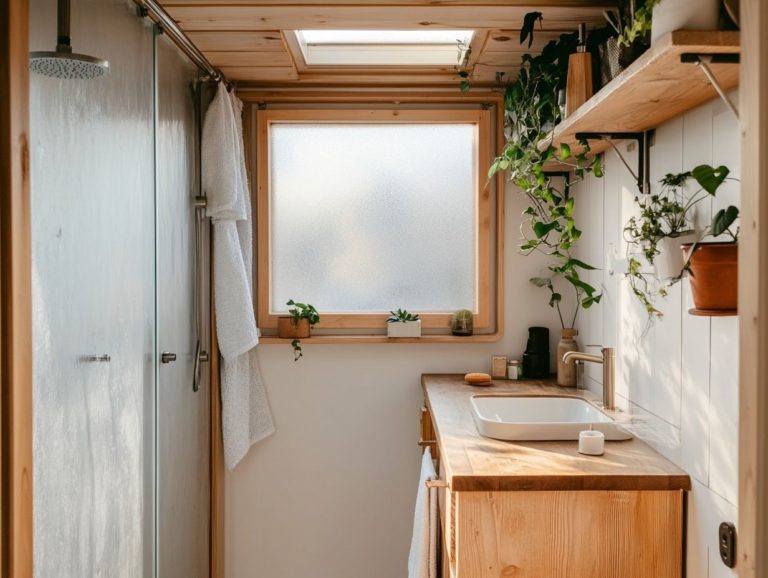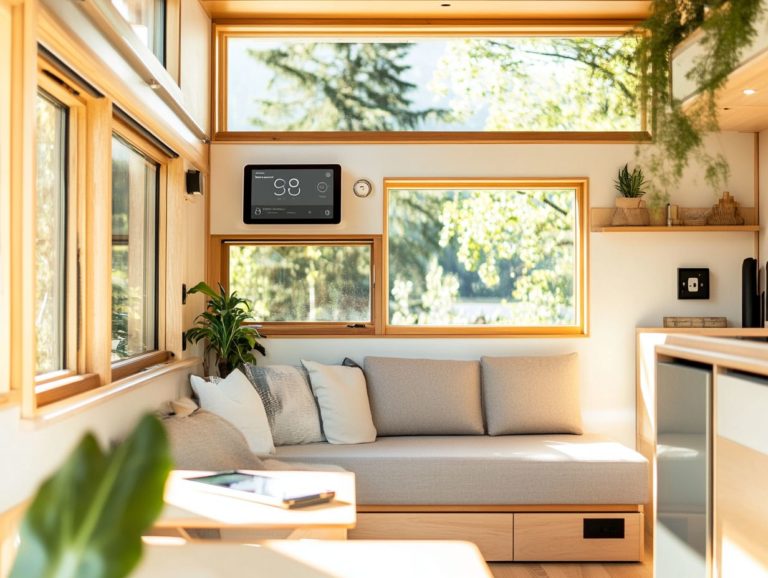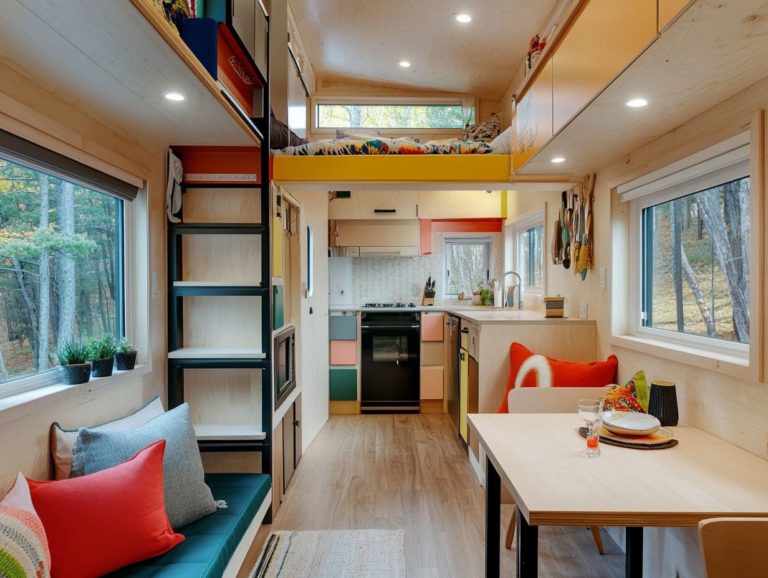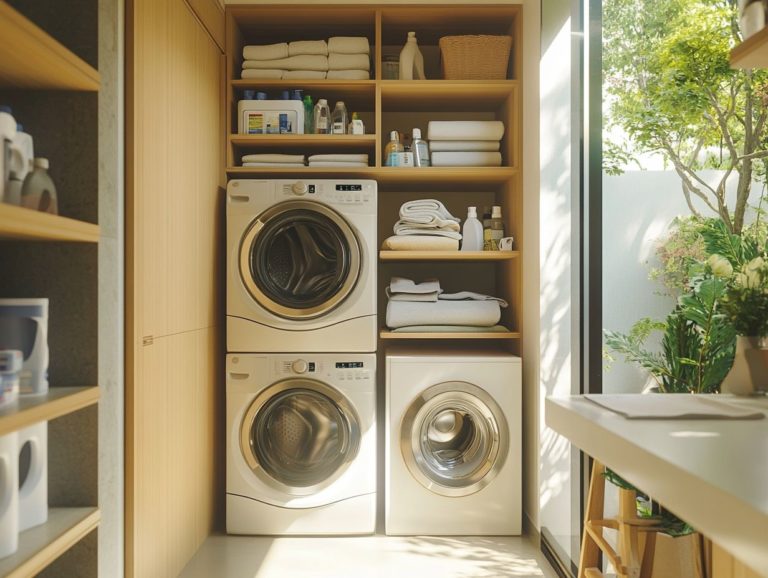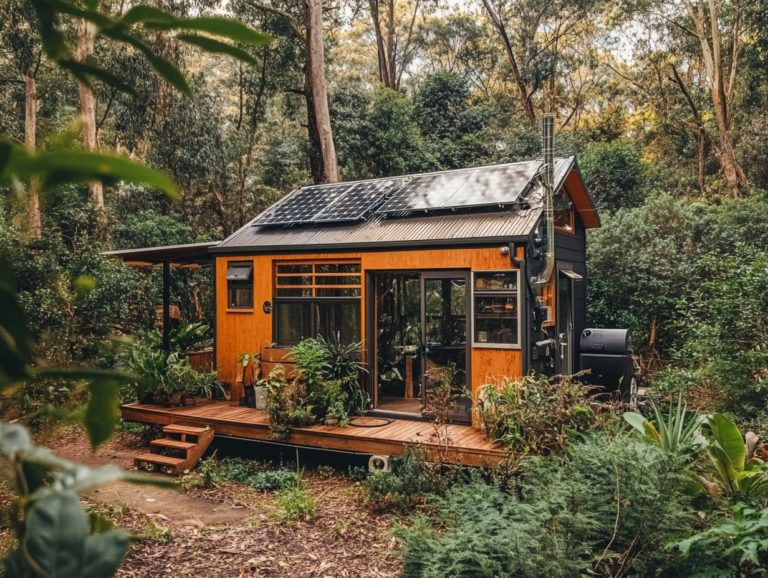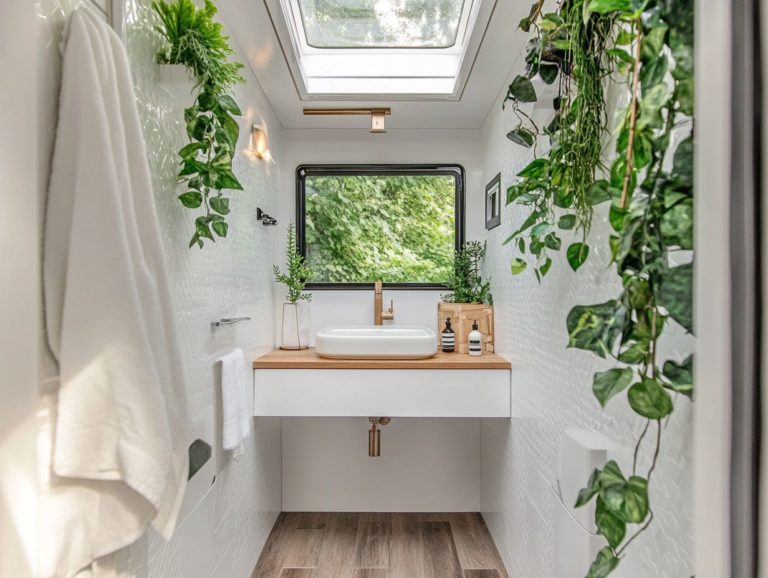Designing for Dual Purpose: Tiny House Tips
In today s world, where space is often at a premium, dual-purpose design has emerged as an elegant solution for maximizing functionality without sacrificing style.
Let s dive into the amazing benefits and challenges of this approach, particularly within tiny houses. You ll uncover space-saving strategies, innovative multi-functional furniture ideas furniture that can serve more than one purpose and tips for crafting a cozy yet efficient living environment.
Discover how these concepts can significantly contribute to sustainable living. Now is the perfect time to embrace dual-purpose design and elevate your space to new heights!
Contents
- Key Takeaways:
- The Concept of Dual Purpose Design
- Space-Saving Strategies for Tiny Houses
- Innovative Dual Purpose Furniture
- Designing for Comfort and Efficiency
- Dual Purpose Design for Sustainability
- Frequently Asked Questions
- 1. What is the concept of designing for dual purpose in tiny houses?
- 2. Why is designing for dual purpose important in tiny houses?
- 3. What are some examples of dual purpose designs in tiny houses?
- 4. How can I incorporate dual purpose designs in my tiny house?
- 5. Are there any tips for designing for dual purpose in tiny houses?
- 6. Can designing for dual purpose also save money in tiny houses?
Key Takeaways:
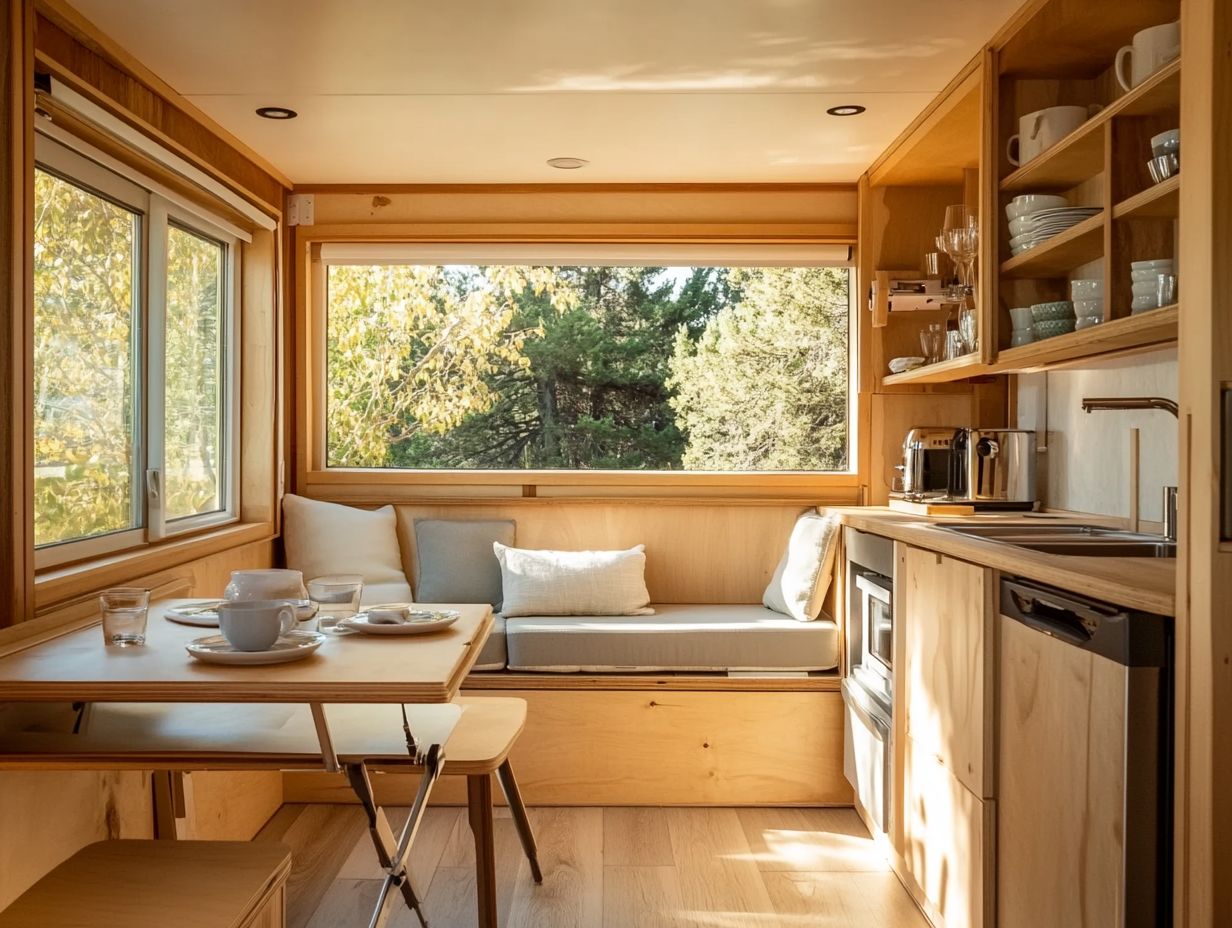
- Dual-purpose design maximizes functionality and saves space in tiny houses. However, it comes with unique challenges.
- Multi-functional furniture creates a comfortable environment, offering smart solutions like expandable tables.
- This design approach promotes sustainability through eco-friendly choices.
The Concept of Dual Purpose Design
Dual-purpose design is a smart approach in interior design, particularly thriving in tiny homes and compact spaces where space optimization reigns supreme. This design philosophy champions the use of multi-functional furniture and inventive solutions, ensuring that every element contributes to multiple functions, elevating both functionality and style in your home.
By embracing this concept, you can cultivate a more organized and visually striking environment, transforming small living areas into expansive and inviting retreats. The thoughtful use of light colors and mirrors enhances the illusion of space, creating a harmonious atmosphere that invites both comfort and style. For those considering such transformations, learning how to create a functional tiny house layout can be invaluable.
Understanding the Benefits and Challenges
Understanding the benefits and challenges of dual-purpose design is essential for anyone seeking to craft a cozy haven in a small living space. This innovative design approach not only provides clever solutions but also introduces unique hurdles that call for creativity and meticulous planning.
By embracing dual-purpose design, you can maximize your space without sacrificing style, turning limited areas into functional sanctuaries. Imagine seamlessly integrating furniture that serves multiple roles—think a stylish sofa bed or a chic coffee table with hidden storage. Implementing sustainable design practices for tiny houses can significantly enhance the overall functionality of your room.
However, the journey to achieving this balance isn’t without its challenges. The myriad of customization options can be overwhelming, and it’s crucial to navigate budget limitations while maintaining style. Therefore, employing smart design solutions for tiny house living and making thoughtful choices becomes key in overcoming these obstacles and fully optimizing your available space.
Space-Saving Strategies for Tiny Houses
Space-saving strategies for tiny houses are crucial for crafting a functional and visually appealing living environment. These strategies emphasize innovative design solutions that enable you to maximize every inch of your compact space, allowing you to embrace a comfortable lifestyle without the sensation of being cramped.
Maximizing Functionality in Limited Space
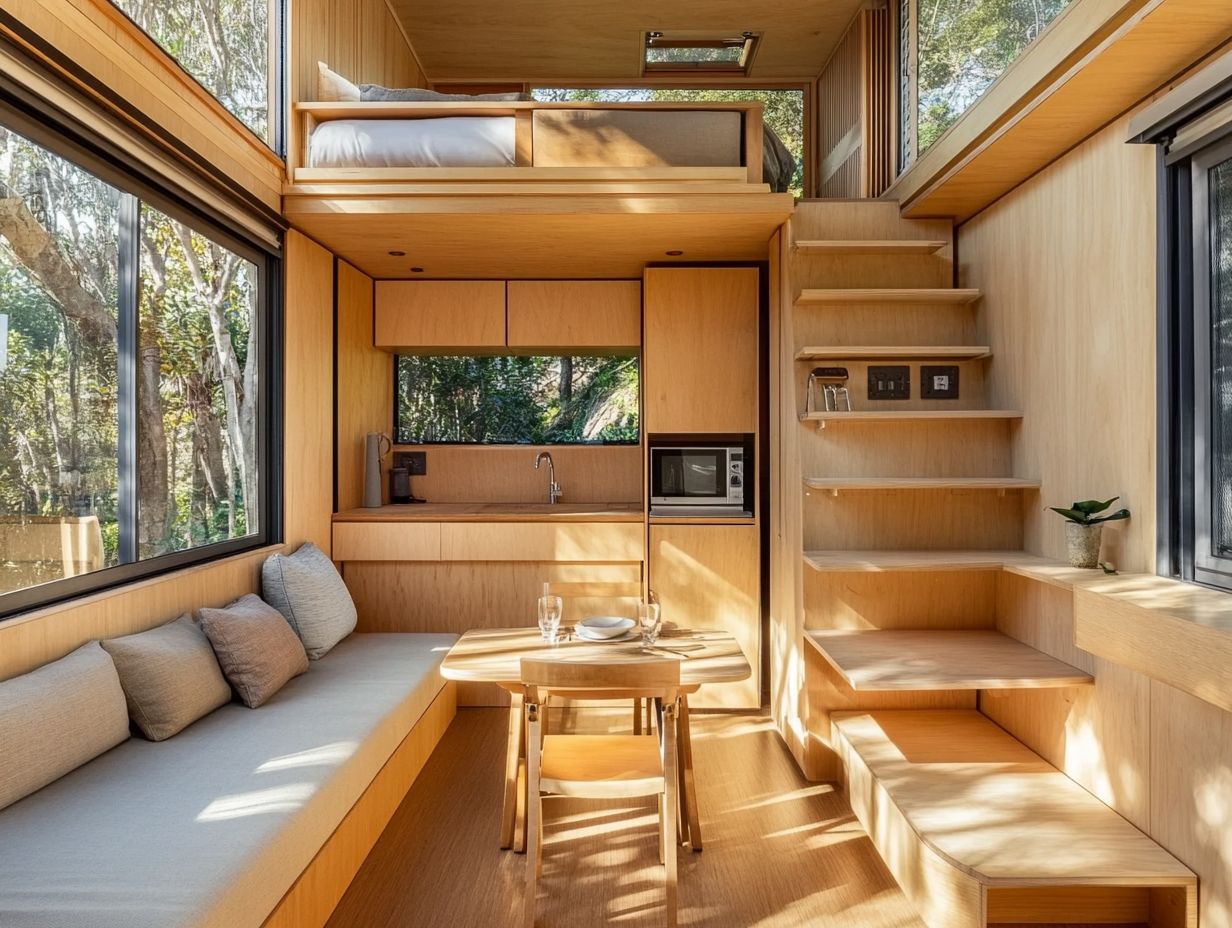
Maximizing functionality in limited space is essential when designing tiny homes, where every square foot counts. Embrace creative approaches like using vertical space and creating flexible zones to enhance the practicality of a small living area.
Incorporate custom furniture tailored to your unique dimensions for solutions that blend seamlessly with your environment. For those looking to optimize their living area, consider maximizing small spaces with smart storage solutions that can turn everyday items into hidden treasures, cleverly concealing them while keeping the space neat.
Experts love multi-purpose items! They boost versatility and style, such as beds with built-in drawers or extendable tables. By thoughtfully considering each element, you can make the most of your compact living quarters, turning limitations into exciting opportunities for innovative design and comfort. For more insights, check out this guide on how to create a multi-functional tiny house.
Innovative Dual Purpose Furniture
Innovative dual-purpose furniture is key to transforming tiny homes into functional sanctuaries. Incorporate items like expandable tables and foldable chairs to embrace versatile solutions that maximize space and add a cozy charm to your interiors.
Examples and Ideas for Multi-functional Furniture
Explore examples and ideas for multi-functional furniture to ignite your creativity in utilizing limited space. Consider custom drawers and pull-out cabinets; these innovative pieces not only offer essential storage but also enhance the design of your tiny home.
Think about a sofa bed that effortlessly turns your living room into a cozy guest bedroom. Or imagine a dining table with built-in storage that merges functionality with style in your compact kitchen. For more ideas on optimizing your space, check out this guide on how to design a tiny house for year-round living.
Creative designs, like nesting tables that tuck away when not in use, offer flexibility without sacrificing aesthetics. Add elements such as benches with hidden compartments or ottomans that double as storage units to maximize your space in stylish, modern ways.
By embracing these versatile pieces, you promote efficiency while cultivating a charm that reflects your personal tastes.
Designing for Comfort and Efficiency
Designing for comfort and efficiency is crucial for creating a living space that feels inviting and meets practical needs. Prioritize elements like a cozy ambiance, appropriate lighting, and thoughtful design to transform even the smallest areas into functional and welcoming retreats.
Creating a Cozy and Practical Living Space
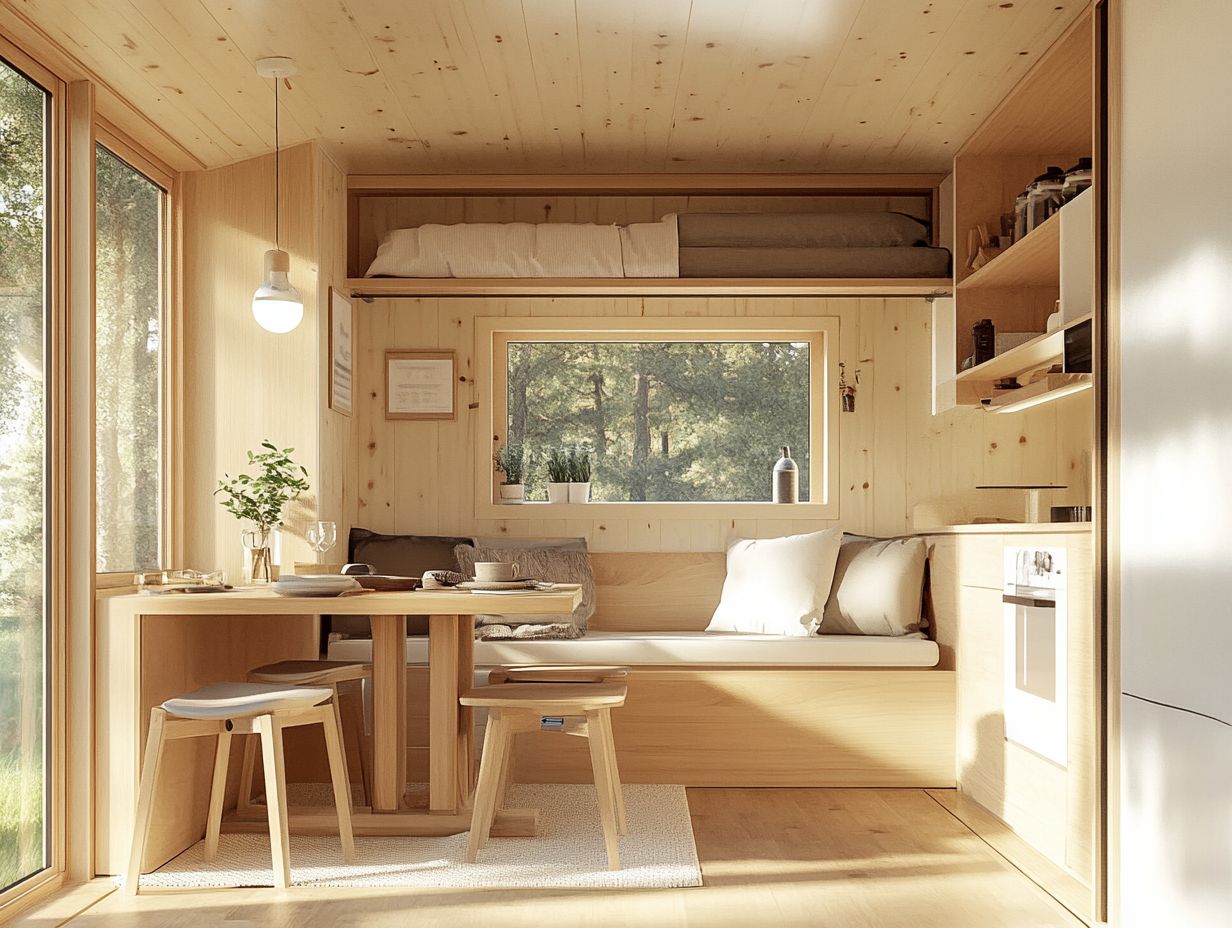
Creating a cozy and practical living space requires striking a balance between aesthetics and functionality. Implement effective home organization and employ clutter reduction techniques to elevate comfort in smaller areas.
To achieve this harmony, consider multifunctional furniture like ottomans with hidden storage or coffee tables that serve as desk space. Using warm lights, such as softly glowing lamps and strategically placed fairy lights, will help you cultivate an inviting atmosphere. Additionally, exploring tiny house design elements for comfort and function can further enhance your space.
Soft textiles, like plush rugs and cozy throws, add warmth while promoting comfort. Decluttering surfaces and choosing decorative baskets or stylish bins can maintain tidiness, allowing personal touches like framed photos and plants to shine.
These carefully considered design strategies enhance the atmosphere and ensure practicality for your everyday living.
Dual Purpose Design for Sustainability
Dual-purpose design aligns perfectly with sustainability, promoting eco-friendly choices that protect the environment and minimize waste. This approach is vital in affordable housing, where using materials like reclaimed wood elevates aesthetics and reflects a commitment to environmental responsibility.
Eco-Friendly and Sustainable Design Choices
Eco-friendly and sustainable design choices are essential when you re implementing dual-purpose design in tiny homes. This approach ensures that your living spaces are not just functional but also environmentally responsible.
By utilizing natural materials and prioritizing energy efficiency, you can significantly enhance your overall quality of life.
For instance, opting for reclaimed wood and bamboo not only provides durability but also helps minimize deforestation. Incorporating recycled metal and glass is another excellent way to reduce waste.
You ll find that energy-efficient appliances, LED lighting, and solar panels can drastically lower your utility bills while promoting a smaller carbon footprint.
Choosing paints that release fewer harmful chemicals and finishes is a smart move. It contributes to better indoor air quality and creates a healthier environment for you and your loved ones.
By adopting these practices, you can transform your living space into an eco-friendly sanctuary!
Frequently Asked Questions
1. What is the concept of designing for dual purpose in tiny houses?
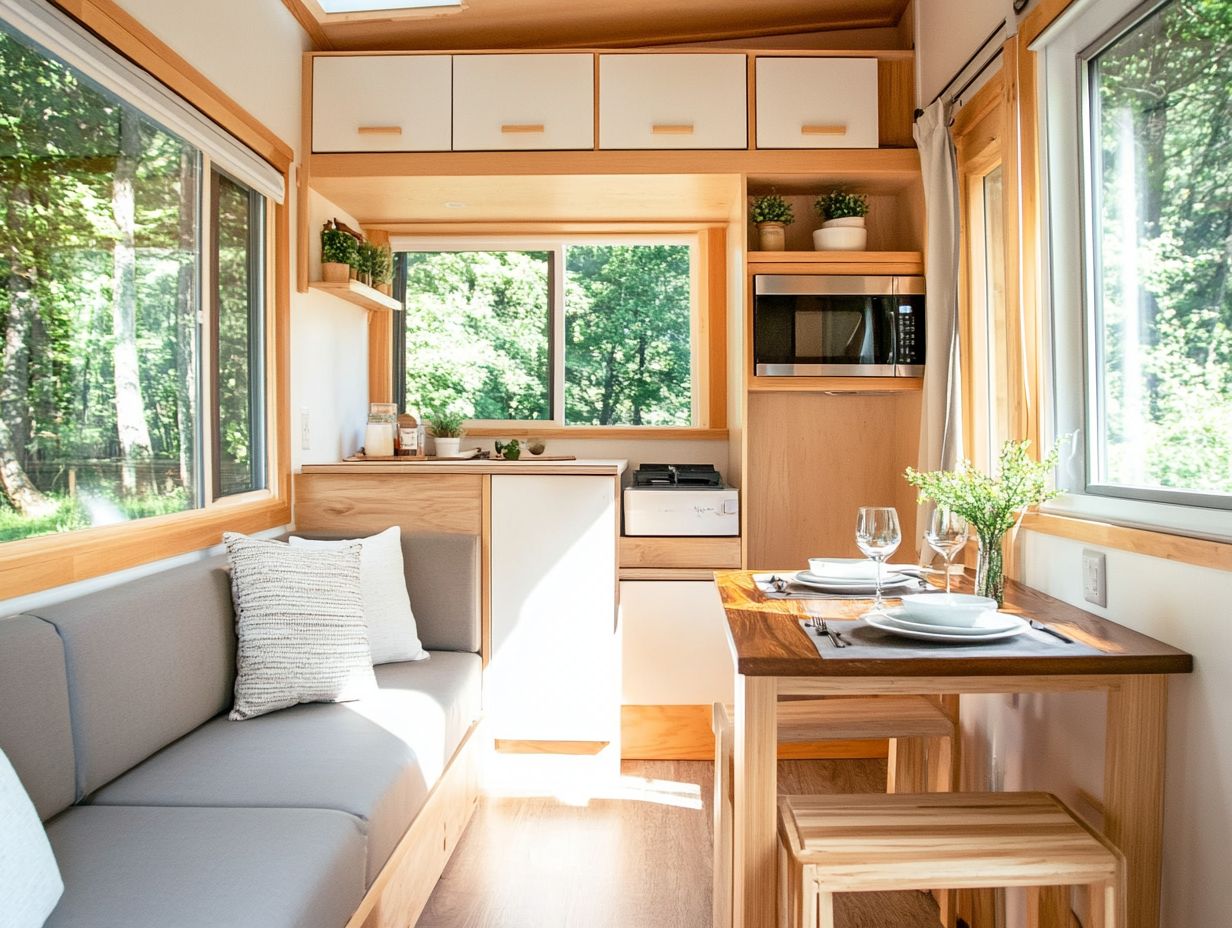
Designing for dual purpose in tiny houses means creating spaces or furniture that serve multiple functions, maximizing the limited space available in tiny homes.
2. Why is designing for dual purpose important in tiny houses?
Designing for dual purpose is crucial as it helps maximize space and enhances functionality. It shows what efficient design means in tiny homes.
In tiny houses, every square inch counts. By designing for dual purpose and utilizing creative storage solutions, you can make the most out of the limited space and avoid clutter.
3. What are some examples of dual purpose designs in tiny houses?
Some examples include using a murphy bed that doubles as a sofa, incorporating storage under stairs, and using pull-out cabinets and foldable furniture such as tables and chairs.
4. How can I incorporate dual purpose designs in my tiny house?
Start by assessing your needs and identifying which areas or furniture can serve multiple functions. Think creatively to come up with unique solutions for your tiny home.
5. Are there any tips for designing for dual purpose in tiny houses?
Some tips include using multi-functional furniture, utilizing vertical space, and keeping the design simple and clutter-free.
6. Can designing for dual purpose also save money in tiny houses?
Yes! Designing for dual purpose can save money by eliminating the need for extra furniture or storage units. It can also help cut down on utility costs by making the space more energy-efficient.

